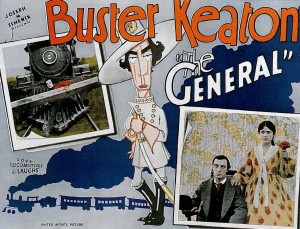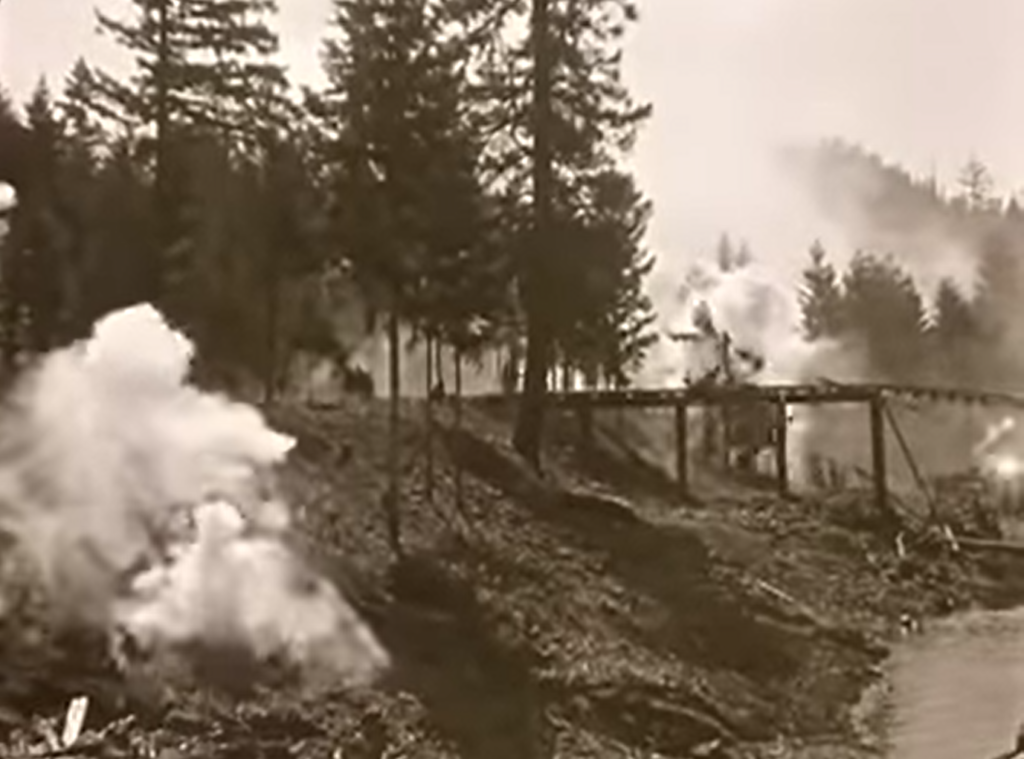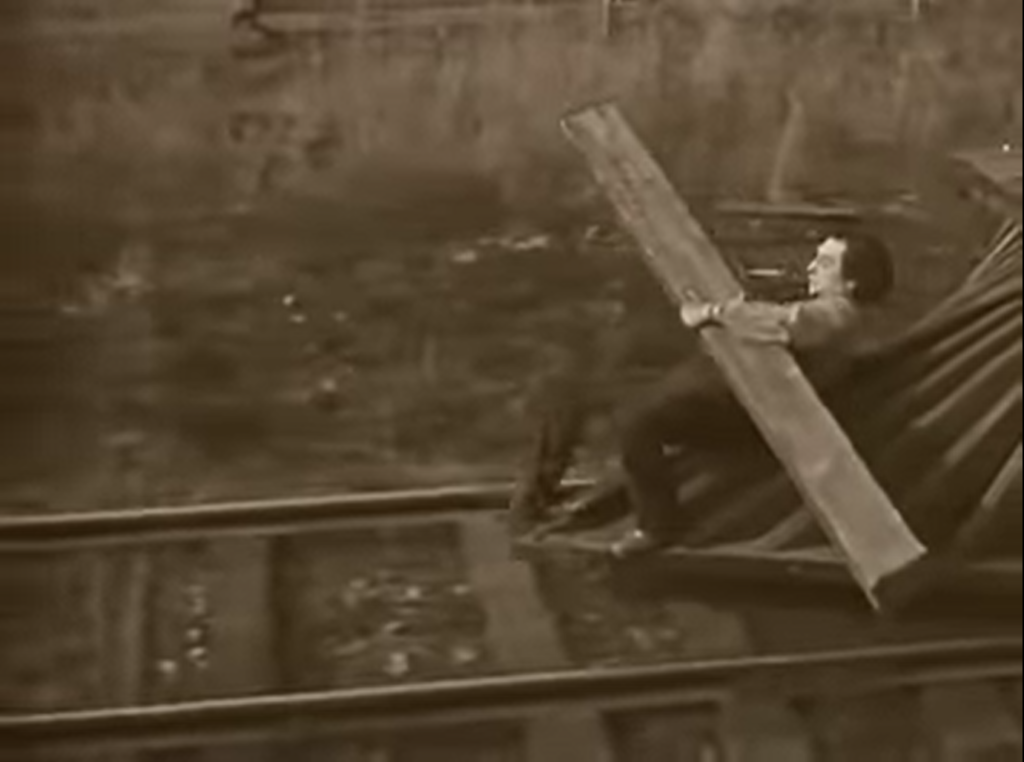General, The (1926)
“Don’t enlist him; he is more valuable to the South as an engineer.”
|
Synopsis: |
|
Genres, Themes, Actors, and Directors:
Response to Peary’s Review: … it “features a dazzling number of sight gags, some spectacular Keaton acrobatics…, and… ingenious use of the frame”. Peary notes that “as usual, Keaton is a sweet fellow and it’s a delight watching this tiny, unmuscular civilian pull off one heroic act after another while soldiers on both sides accomplish nothing”. Peary spends the remainder of his review pointing out something most other critics haven’t noted (or don’t agree with): the fact that “the relationship between Keaton and Mack is wonderfully romantic”. He argues that “her well-intentioned but ridiculous attempts to help in their escape effort both exasperate him and reinforce his love for her”, and calls out in particular the somewhat astonishing moment — you’ll likely give a start at its modernity and authenticity — when “he playfully strangles her, then kisses her” as she demonstrates tremendous ineptitude while “helping” him select wood for the engine’s fire. This scene — along with countless others in which he demonstrates a truly astonishing level of dexterity and quick-thinking savvy — make him a silent-film “hero” we’re delighted to see in action. In sum, this one is, as Peary calls it, “marvelous in every way”, and deserves its ranking as one of the best American films. Note: Watch for the impressive burning bridge sequence, which cost $42K, making it “the most expensive single shot in silent film history”. Redeeming Qualities and Moments: Must See? Categories
(Listed in 1001 Movies You Must See Before You Die) Links: |






One thought on “General, The (1926)”
Must-see, as one of Keaton’s best films.
I tend to not feel the need to pinpoint what might be Keaton’s ‘masterpiece’. He consistently made so many brilliantly realized films that I recommend just about all of them: he is *that* good.
With ‘The General’, it seems a bit deceptive just how clever the film is. It can’t have been an easy film to make, for starters. Many of the set-ups are very complex, and it became Keaton’s task to make everything seem effortless. ~which he does.
I especially like the number of pay-offs this film affords. I’m thinking of things like: the scene in which Keaton is hiding under the enemy’s table, for example. First, he is sitting very near the tablecloth and is burned when a cigar is placed too close-by. The burn results in a hole in the cloth, of course – through which Keaton later sees that it is his true love who has been abducted and is suddenly in the same room with him.
But that’s just one example of how Keaton playfully amuses his audiences in non-stop fashion. Another highlight example is Keaton’s various attempts at enlisting in the army, each of which we’re sure will result in success.
There’s something unmistakable about Keaton’s demeanor which keeps his presence in his films ever-fresh: he is simultaneously broad yet subtle. His view of comedy is ruled by sharp intelligence which sits very comfortably with whimsy.
Keaton’s major work is now on its way to being 100 years old. And yet it does not feel old in the slightest.